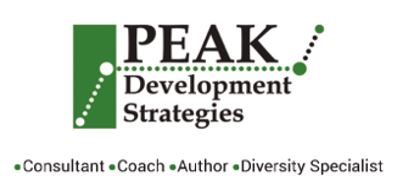“Putting a new employee on the job to ‘sink or swim’ results in frustration, sloppy work habits, and omission of important details. Reinforce the attitudes and behavior patterns you want.”
Developing people and developing dynamic work teams are closely related skills. To ensure long-term productivity in the organization, plan ahead and anticipate the development needs of those who report to you. Developing people must go hand-in-hand with empowerment at all levels of the organization. It ensures future progress because it prevents leaders from becoming overworked or burned out.
Adequate training of new employees and those assigned new tasks or procedures reduces the need to spend large blocks of time answering questions and telling people what to do next. Nearly all people enjoy the personal satisfaction and success derived from being productive. When someone performs poorly, the cause is usually either inadequate knowledge or lack of motivation. Both indicate the need for training and development.
When inadequate job training is a problem, many managers and supervisors tend to say, “If I want something done right, I have to do it myself.” They fail to acknowledge the need for training and instead add to their own work load another team member’s responsibility. If it’s appropriate for a person to do a certain job, then it’s important to provide adequate training. Adding the job to your own work schedule is a poor substitute.
When you realize training is needed, provide it as soon as possible. The longer you wait, the harder it is to change established habits. One of the most helpful tools in maintaining job training is a current job description for each team member. Job descriptions clearly define expectations for team members and those to whom they report. If your organization doesn’t currently use job descriptions, consider developing them with your people. Keep everybody on track through periodic updating of job descriptions.
Train all new employees immediately upon hiring. Always instruct them thoroughly in job requirements. Putting a new employee on the job to “sink or swim” results in frustration, sloppy work habits, and omission of important details. Reinforce the attitudes and behavior patterns you want. A new employee is usually highly receptive to suggestions and eagerly assimilates and readily accepts the organizational vision, mission, and goals.
Another time to train people is when introducing a new procedure or type of work. Careful instruction and supervision ensure that everyone involved understands each step and accepts appropriate responsibility for producing the desired results. Encourage people to ask questions; show that you’re willing to repeat yourself until everyone clearly understands.
Although skill and knowledge are essential to the success of a work unit, equally important is motivation. No matter how capable your people, no matter what potential they have for productivity, they accomplish little without the motivation to work successfully. The most effective motivation is, of course, the inward desire to achieve and contribute. You can’t, in one sense, instill self-motivation within others; but you can create an empowering, motivational climate. Such a climate is one in which growth and initiative are rewarded, recognition for achievement is given, and taking personal responsibility is encouraged.
An effective ongoing training and development program includes not only technical knowledge and information, but also motivation and goal setting for all employees. The organization that provides motivational training and learning opportunities for people at every level of the organization is an organization that enjoys long-term productivity and success.
LMI Journal

Recent Comments